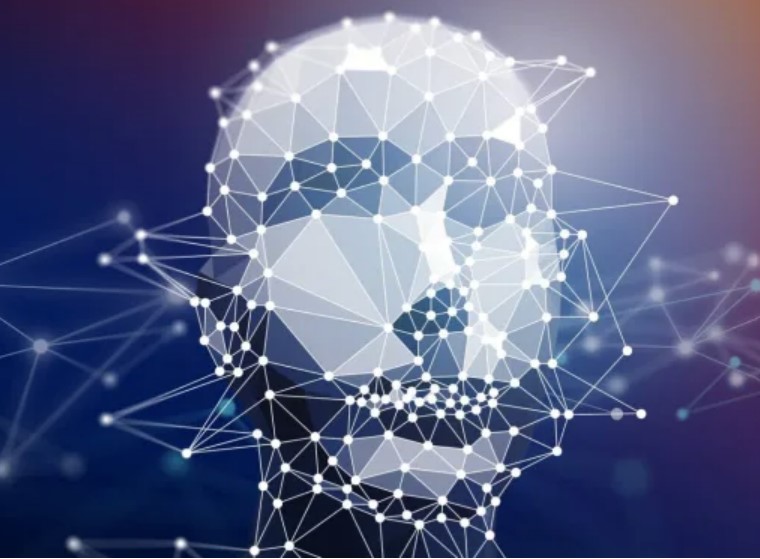by MATTHEW MILLER, DEPARTMENT SPOKESPERSON — The United States is today designating key Hizballah operatives and financiers operating a network in South …

Story by David Rufful --- Speculation is swirling about who is really in charge and the Biden Administration as President Joe Biden appears unfit for office. At 80 years old, Biden is the oldest president in US history. If re-elected, he would be 82 at the start of his next term and 86 at the end of it. Numerous high-profile political commentators and former politicians, including former Speaker of the House Newt Gingrich, have suggested Biden can’t possibly be making the important decisions. (Poll: Is Joe Biden Fit to be President? VOTE)
During an appearance on Newsmax, political commentator Megyn Kelly suggested that former president Barack Obama and former First Lady Michelle Obama may be actually running the show. “There are a lot of people who think the Obamas are already running the government and that there is some sort of shadow puppet situation going on that they’re controlling,” Kelly told Newsmax. “There’s been questions from the beginning — is it Joe Biden really making the calls?” “I think Michelle Obama is seen as a savior figure by the Democrats who think she’s the most beautiful person ever. They think she’s the strongest leader. They think she’s their big hope,” Kelly said. Obama Suggested Having a ‘Front-Man’ For 3rd Term Dr. Ronny Jackson, the former White House physician for both Obama and Trump, has suggested that Biden is suffering from age-related dementia based on his constant mental lapses and gaffes in public.

Story by Katyanna Quach - the register -- • It's not all bad news. Poets are safe. And machines will take some jobs no human wants Generative AI will replace 2.4 million US jobs by 2030, and influence another eleven million, but other forms of automation will cost more jobs, according to a report from analyst firm Forrester.… The firm’s 2023 Generative AI Jobs Impact Forecast [PDF] predicts that the tech will reshape more jobs than it replaces, but also includes a section titled “Let’s Be Clear: Generative AI Is Coming After White Collar Jobs”. White collar workers most at risk of being left behind will be technical writers, social science research assistants, proofreaders, copywriters, and those in administrative positions. The biggest disruptions will be felt by workers that have college degrees, perform white-collar jobs, and are middle class. People with annual salaries less than $60,000, for example, will be impacted less by generative AI than those that earn $90,000 or more. Here's a chart below showing how much different types of jobs can expect to be influenced by technology: Such workers have a couple of years in which to prepare, Forrester’s analysts suggest, because its modelling assumes it will take time for “questions on intellectual property rights, copyright, plagiarism, model refresh rates, model bias, ethics, and model response reliability” to be resolved.
The report also predicts that while generative AI will cost jobs, other forms of automation will have a greater impact. In 2023, the report predicts, generative AI will cause 9.3 percent of jobs lost to automation, rising to 30.4 percent by 2030. Not every job replaced by automation is a job lost to humans, the report asserts, because humans don’t want certain jobs. “In some cases, automation will stand in for jobs that have been hard to fill,” the report states. “For instance, physical robotics and automation are only beginning to fill the workforce gaps that have plagued frontline work in the 2020s.” But other jobs will impact humans and Forrester’s analysts warn of “deep social challenges like those faced in the post-industrial Rust Belt.”

By MUSTAFA SULEYMAN -- time.com -- We are about to see the greatest redistribution of power in history. Over millennia, humanity has been shaped by successive waves of technology. The discovery of fire, the invention of the wheel, the harnessing of electricity—all were transformational moments for civilization. All were waves of technology that started small, with a few precarious experiments, but eventually they broke across the world. These waves followed a similar trajectory: breakthrough technologies were invented, delivered huge value, and so they proliferated, became more effective, cheaper, more widespread and were absorbed into the normal, ever-evolving fabric of human life.
We are now facing a new wave of technology, centered around AI but including synthetic biology, quantum computing, and abundant new sources of energy. In many respects it will repeat this pattern. Yet it will also depart from it in crucial ways only now becoming clear. Amidst all the hype, the hope, the fear, I think the fundamentals are getting lost; the unique characteristics of this wave are getting missed in the noise. Understanding them, seeing what, exactly, is changing, is critical to understanding the future. AI is different from previous waves of technology because of how it unleashes new powers and transforms existing power. This is the most underappreciated aspect of the technological revolution now underway. While all waves of technology create altered power structures in their wake, none have seen the raw proliferation of power like the one on its way.
Think of it like this. Previous era’s most powerful technologies were generally reserved to a small capital rich elite or national governments. Building a steam powered factory, an aircraft carrier or a nuclear power plant were costly, difficult and immense endeavors. With the leading technologies of our time, that’s no longer going to be true. If the last great tech wave—computers and the internet—was about broadcasting information, this new wave is all about doing. We are facing a step change in what’s possible for individual people to do, and at a previously unthinkable pace. AI is becoming more powerful and radically cheaper by the month—what was computationally impossible, or would cost tens of millions of dollars a few years ago, is now widespread.
Khazen History


Historical Feature:
Churches and Monasteries of the Khazen family

St. Anthony of Padua Church in Ballouneh
Mar Abda Church in Bakaatit Kanaan
Saint Michael Church in Bkaatouta
Saint Therese Church in Qolayaat
Saint Simeon Stylites (مار سمعان العامودي) Church In Ajaltoun
Virgin Mary Church (سيدة المعونات) in Sheilé
Assumption of Mary Church in Ballouneh
1 - The sword of the Maronite Prince
2 - LES KHAZEN CONSULS DE FRANCE
3 - LES MARONITES & LES KHAZEN
4 - LES MAAN & LES KHAZEN
5 - ORIGINE DE LA FAMILLE
Population Movements to Keserwan - The Khazens and The Maans
ما جاء عن الثورة في المقاطعة الكسروانية
ثورة أهالي كسروان على المشايخ الخوازنة وأسبابها
Origins of the "Prince of Maronite" Title
Growing diversity: the Khazin sheiks and the clergy in the first decades of the 18th century
Historical Members:
Barbar Beik El Khazen [English]
Patriach Toubia Kaiss El Khazen(Biography & Life Part1 Part2) (Arabic)
Patriach Youssef Dargham El Khazen (Cont'd)
Cheikh Bishara Jafal El Khazen
Patriarch Youssef Raji El Khazen
The Martyrs Cheikh Philippe & Cheikh Farid El Khazen
Cheikh Nawfal El Khazen (Consul De France)
Cheikh Hossun El Khazen (Consul De France)
Cheikh Abou-Nawfal El Khazen (Consul De France)
Cheikh Francis Abee Nader & his son Yousef
Cheikh Abou-Kanso El Khazen (Consul De France)
Cheikh Abou Nader El Khazen
Cheikh Chafic El Khazen
Cheikh Keserwan El Khazen
Cheikh Serhal El Khazen [English]
Cheikh Rafiq El Khazen [English]
Cheikh Hanna El Khazen
Cheikha Arzi El Khazen
Marie El Khazen